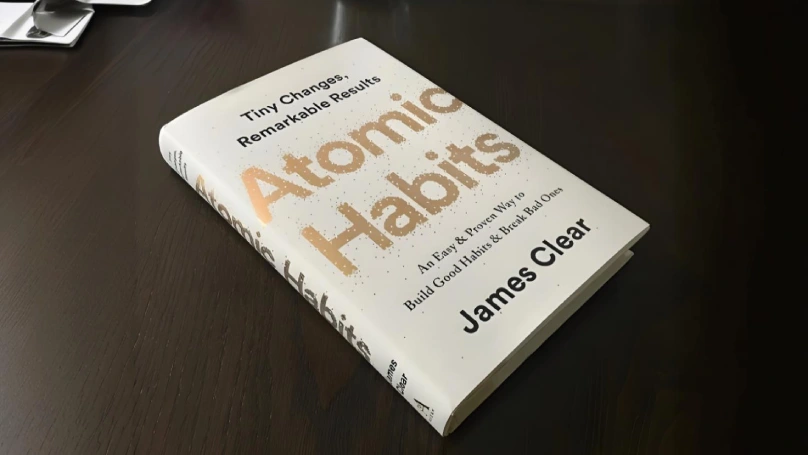Have you ever stopped to wonder why some people achieve their desires with apparent ease while others have to struggle to even make some progress toward theirs? The answer may lie in their habits. In Atomic Habits, James Clear explains how small yet consistent changes can lead to extraordinary results down the line. The book deals not only with bad habits and good habits but understanding how habits work so that you can use that knowledge to change your life.
Whether you want to maintain good health, productivity, or personal growth, Atomic Habits provides a workable paradigm to effect lasting change. This article will explain the concepts at the heart of the book, provide actionable insights, and show you ways to make these things work in your very own life. Are you ready to unlock the tiny habits? Then let’s get rolling!
What Are Atomic Habits?
Picture this: a seed is being sown into your garden. At this point, it looks relatively unimportant—little, maybe a bit fragile, buried deep in the soil. But with care over time, it grows into a tree that gives shade, beauty, and even fruits: such is the definition of atomic habits, incremental changes that compound over time to become something great.
According to James Clear, atomic habits are small changes, marginal gains, or even 1% improvements. Even such small actions may seem meaningless in the course of things, but stacking them up in a consistent fashion would give a geometric advantage. Think of compounding interest: the bigger the principal, the bigger the return.
Why must one focus on small? Because it is less complex to stick to. It is overwhelming and unrealistic to change one’s way of living overnight. Atomic habits enable one to start small and establish credibility and faith in the power of consistency.
The Four Laws of Behavior Change
Atomic Habits presents the Fundamental Four Laws of Behavior Change as the core compass on which solidifying good habits and eliminating bad ones can be established. Let us now look deeper into each law:
- Make It Obvious: From awareness, the habit formation journey starts. Identify some of the cues that trigger the habits. For instance, in your drive to drink more water, keep a water bottle on your desk where it can readily be seen.
- Make It Attractive: The more appealing a habit seems to one, the better the chances it will stick. In such a case, combine your new habit with something you already enjoy. For example, exercise while listening to your favorite podcast.
- Make It Easy: The easier you make it, the better. To truly increase your reading, set a goal of one page a night to get started and work your way up. The easier the habit, the more likely you are to keep it up.
- Make It Satisfying: You want a reward right away to reinforce the behavior. Celebrate those tiny victories.

The Role of Identity in Habit Formation
Among the most compelling ideas in Atomic Habits is understood as identity-based habits. It disentangles the question of what you wish to achieve (outcomes) from the question of who you wish to become (identity).
Wishing to become a writer? Rather than set the goal of completing a single book, begin to embody the identity of a writer: write every day, even if just a few lines. Over time, this identity change will strengthen your habit formation and, therefore, allow your habits to stick.
James Clear believes that every action you take is a vote for the kind of person you wish to become. Ask yourself: Who is it that I want to be? And what habits would get me there?
“The ultimate form of intrinsic motivation is when a habit becomes part of your identity. It’s one thing to say I’m the type of person who wants this. It’s something very different to say I’m the type of person who is this.”
James Clear
The Habit Loop: Cue, Craving, Response, Reward
All habits go through a four-step process: cue, craving, response, and reward. Understanding this cycle is critical to changing behavior.
- Cue: The event that cues an individual to perform the habit (for instance, feeling stressed).
- Craving: The desire to act upon the habit (for example, that irresistible craving for junk food).
- Response: The actual habit (for instance, eating the entire bag of chips).
- Reward: The soothing feeling one gets after carrying out the task (in this case, a little relief from stress).
Taking these steps together, if you can manipulate them, you can transmute a bad habit into a good one. Say, for example, junk food cravings triggered by stress. Try switching to a healthy response, such as walking, that yields a similar reward.

How to Break Bad Habits
Of course, just getting rid of bad habits is equally important as putting good ones in their place. According to James Clear, the Four Laws can be inverted to eliminate bad behavior:
- Invisible: Removing all cues that trigger the habit in question.
- Unattractive: Harping on the disadvantages of the legitimate bad habit.
- Difficult: Creating friction against the exercise of bad behavior.
- Unsatisfying: Depriving the rewards that would otherwise arise from the behavior.
An example is to time yourself on app use and delete the apps from your phone so that you’re not just locked into scrolling away for hours on social media.
The Importance of Environment in Habit Formation
Your environment is key to your habits. According to James Clear, it’s easier to design your surroundings for success than to lean on willpower alone. A smart environment makes the good habits easy and the bad ones hard.
For example, to read more, place a book on your nightstand. To eat healthier, put healthy foods out in the open and hide unhealthy snacks away. Small modifications made to the surroundings become big behavioral interventions over time.
By purposefully designing your environment to reduce friction for good habits and increase it for bad ones, you create a frictionless pathway that leverages this small yet influential strategy to align your habits with your goal in such a way that the change optimally lasts.

Conclusion
Atomic Habits is certainly not just a book; it is an operational guide toward long-standing success. Start making small, consistent improvements, and you can forge big-time habits toward extraordinary results. Instead of relying on motivation or willpower to cultivate good behavior, James Clear advocates establishing systems, changing identities, and designing environments to make good habits inevitable and bad habits impossible.
Bear in mind that genuine change is accomplished by tiny forefront activities being continuously reinforced. Whether this involves your productivity, health, or personal growth, the laws of Atomic Habits will assist you in creating a better future; hopefully one habit at a time.
If you’re keen to read on other personal development, go through our article The best life coaching books of all time, and discover other transformational books that can partner with you in your self-exploration journey.











